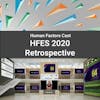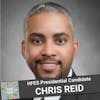Student Design Competition and Navigating Challenges in HF Healthcare | #HFESHCS 2023 | Bonus Episode

In this episode, Elyse interviews three talented finalists from the student design competition at the HFES Healthcare Symposium. Michelle,Yi-Lin, and Steph discuss their cutting-edge digital applications aimed at improving mental health, streamlining speech therapy, and reducing preoperative anxiety in children.
We also hear from Sasoon Arutyunyan, Director of Human Factors at FTE, who shares his insights on medical device development, industry regulations, and the value of attending healthcare conferences.
Tune in to discover the latest in user-centered design and how these students are shaping the future of healthcare technology.
#HumanFactors #Ergonomics #ConferenceInsights #HealthcareHF #HFES2023 #PodcastEpisode #HFAcademics #InnovativeResearch #IndustryTrends #ExpertTalks
In this episode, Elyse interviews three talented finalists from the student design competition at the HFES Healthcare Symposium. Michelle,Yi-Lin, and Steph discuss their cutting-edge digital applications aimed at improving mental health, streamlining speech therapy, and reducing preoperative anxiety in children.
We also hear from Sasoon Arutyunyan, Director of Human Factors at FTE, who shares his insights on medical device development, industry regulations, and the value of attending healthcare conferences.
Tune in to discover the latest in user-centered design and how these students are shaping the future of healthcare technology.
#HumanFactors #Ergonomics #ConferenceInsights #HealthcareHF #HFES2023 #PodcastEpisode #HFAcademics #InnovativeResearch #IndustryTrends #ExpertTalks
Follow us:
- Nick: https://www.twitter.com/Nick_Roome
- Barry: https://twitter.com/Baz_k
- Blake: https://www.instagram.com/dontpanicux/
- Join us on Discord:https://go.humanfactorscast.media/Discord
Thank you to our Human Factors Cast Honorary Staff Patreons:
- Michelle Tripp
Support us:
- Patreon: https://www.patreon.com/humanfactorscast
- Buy us a coffee: https://www.buymeacoffee.com/hfactorspodcast
- Merchandise Store: https://www.humanfactorscast.media/p/Store/
Human Factors Cast Socials:
- Twitch: https://twitch.tv/HumanFactorsCast
- YouTube: https://www.youtube.com/HumanFactorsCast
- LinkedIn: https://www.linkedin.com/company/humanfactorscast
- Twitter: http://www.twitter.com/HFactorsPodcast
- Facebook: https://www.facebook.com/HumanFactorsCast
- Our official website: www.humanfactorscast.media
Reference:
- Our tools and software: https://www.humanfactorscast.media/p/resources/
- Our Ethics Policy:https://www.humanfactorscast.media/p/ethics-policy/
- Logo design by E Graphics LLC: https://egraphicsllc.com/
- Music by Kevin McLeod: https://incompetech.com/music/royalty-free/
Feedback:
- Have something you would like to share with us? (Feedback or news): https://go.humanfactorscast.media/feedback
Disclaimer: Human Factors Cast may earn an affiliate commission when you buy through the links here.
Let us know what you want to hear about next week by voting in our latest "Choose the News" poll!
Follow us:
- Nick: https://www.twitter.com/Nick_Roome
- Barry: https://twitter.com/Baz_k
- Blake: https://www.instagram.com/dontpanicux/
- Join us on Discord:https://go.humanfactorscast.media/Discord
Thank you to our Human Factors Cast Honorary Staff Patreons:
- Michelle Tripp
- Neil Ganey
Support us:
- Patreon: https://www.patreon.com/humanfactorscast
- Buy us a coffee: https://www.buymeacoffee.com/hfactorspodcast
- Merchandise Store: https://www.humanfactorscast.media/p/Store/
Human Factors Cast Socials:
- Twitch: https://twitch.tv/HumanFactorsCast
- YouTube: https://www.youtube.com/HumanFactorsCast
- LinkedIn: https://www.linkedin.com/company/humanfactorscast
- Twitter: http://www.twitter.com/HFactorsPodcast
- Facebook: https://www.facebook.com/HumanFactorsCast
- Our official website: www.humanfactorscast.media
Reference:
- Our tools and software: https://www.humanfactorscast.media/p/resources/
- Our Ethics Policy:https://www.humanfactorscast.media/p/ethics-policy/
- Logo design by E Graphics LLC: https://egraphicsllc.com/
- Music by Kevin McLeod: https://incompetech.com/music/royalty-free/
Feedback:
- Have something you would like to share with us? (Feedback or news):
Disclaimer: Human Factors Cast may earn an affiliate commission when you buy through the links here.
[00:00:00] All right. Hello, my name is Elyse. I'm here at the H F E S Healthcare Symposium and I'm actually sitting with the three finalists for the student design competition, which is all around. Coming up with a new digital application and applying the user-centered design process to it. Really exciting to be sitting with these finalists.
I'm gonna have each of the three go around and introduce themselves and explain a little bit of the app. Hi, my name is Stephanie. Six. I'm currently a third year PhD student at Clemson. University. And I got my start with human factors, just growing up with two engineering parents and I used to just look at things and go, that could be easier.
Why is this so difficult to use? And as I went through my undergraduate, cuz I actually have an undergrad degree in psychology, I just thought of, human factors is just the com combination of engineering and psychology. Two things I find really interesting and I got my start with mental health.
It's always
[00:01:00] been something I'm passionate. Especially, growing up and specifically in college, I had a lot of friends in the R O T C program and they had, just a lot of life things happen to them and they were too scared to reach out for mental health assistance because they didn't wanna lose their scholarships.
They didn't wanna jeopardize the thing that could make them future leaders in our military. And I just thought, that's not right. If they're gonna be leading our country, we should help them in any way We. So that kind of created the idea of creating this backdoor, almost creating what I call airhart, which is this app designed to help reduce symptoms of depression and just educate people overall on.
Techniques to help you when you're feeling down or even when you're feeling stressed, but also introduce it in a way that's fun and in a way that's user-friendly. A lot of the apps out there right now just have really bad usability and people don't wanna use them, and if they're not gonna use them, it can't help them.
So [00:02:00] Airhart is scientifically backed. We did a bunch of research, meta-analysis to really add in as many things as we could to make people want to use the. Because, with Covid and everything, depression rates, they increased. And I think, someone has to help produce those over time and I would love for Airhart to be a part of that play.
Thank you. Hi. My name is Elaine. I'm from San Jose State University. I am the first year grade year student of a human factor in economic program. My app is for speech therapist. They're assessment tool since my sister is an speech therapist and I somehow know that there is a pretty bad shortage of speech therapist in the industry.
I wonder like if there's any solution since I'm really into figuring out problems and then solutions in my previous career path. That's also the reason I get into human factor. And so in India app, so we try [00:03:00] to shorten the operation time of the therapist operating the whole tool.
And in that case it can reduce the fatigue, the errors, and then. In the eventually increase the total of cases they can process per day. Yeah. It's pretty much like this. And I loved the way in your presentation that you had showed all the different tools that they use and how Yeah.
Manual some of those processes are and really trying to solve some of those like human Yeah. I think complexity was the problem as well, but it. Couldn't be a problem for events as they're trained and professional, but as I am not like medical profession at all, it was pretty difficult for me to understand the whole thing, like in a role, but like step by step, like I know things out.
Yeah. Wonderful. Thank you. So my name's Michelle and I'm an undergraduate student at the University of Toronto right now and I'm studying industrial engineering [00:04:00] and I actually. Ux I think before I even explored engineering, cuz that was all the way back in grade 10, I think. So that was, I was work just paying a visit like to my grandparents' home.
And what I realized is when I asked them to do things on their smartphones send me a message so I can like, send them like photos of like my pet or something. They just struggle a lot with. And it's understandable because they didn't grow up with that kind of technology and to suddenly switch from even just like one of those, heart like old-fashioned cell phones, those are already a little bit difficult to use for seniors.
And now I'm asking 'em to navigate all of these buttons that don't even reflect how phones look like now. It just doesn't really make sense. And then I started thinking about how I could simplify interface. To help make their lives easier. For instance I don't, a lot of people don't use it, but the iPhone app actually has like shortcuts and scripts that you can write to automate processes a little bit.
So I help them automate processes such as if they wanna open like a video they just have to press one button [00:05:00] on the home screen and that would bring them there. So that's like my first peak into ux, even though I didn't know it was UX at the. And then when I discovered that it was like an actual field out there, that got me really excited because I was like, then I can do that, like when I graduate.
I found that industrial engineering was a good door to that. And as I studied industrial engineering and attended a lot of hackathons, I started to gain the technical skills of. Like Figma and developing the prototypes and the UI experience. So for this app specifically, my focus was on reducing the preoperative anxiety of children.
So meaning their anxiety before they go into a surgery. And the approach is to develop a mobile based app that can be accessed from the child's home. Because currently most of the programs or all the programs out there are not mobile based, or they're not internet based. They're like really wordy brochures.
If you saw them, you would cry. Like it's really it's not pleasant to the eye, and especially for a child who needs a lot of visual. It doesn't really work. So this mobile app would be customized to the [00:06:00] child's needs, their surgery type, their age group with really colorful illustrations.
And it shows an avatar undergoing the same exact type of surgery that they'll be undergoing. So it follows their journey as they pack their bags to head to the hospital as they're in the waiting room, as they're in the surgery room and all the way till they're picked up by their parents in the hospital bed.
So this approach will be like a fun way that incorporates play and incorporates visuals to help the child understand what to. Thank you for Yeah. And I should say congratulations since your app was selected as the winner. Thank you. This is me. But I know that this competition is, beyond, winners or losers.
A lot of the value from it is being able to go through this process and, presenting it to people. Now that you've gone through this, what would you say was one of the hardest parts or like the most surprising parts that you learned? Doing this, and we can start with whoever wants to go first.
Go ahead. Or I can go, cause I'm holding the, I'm holding the thing. So I think the hardest part for me was [00:07:00] trying to learn like retaught, reteach myself how a child interacts with an interface versus an adult. Because what I discovered is they have really different cognitive abilities, emotional capabilities, and just their physical capabilities as.
Of course their attention span is a lot shorter than adults. And they need a lot of things that adults might not need and vice versa. So I had to do a research on that and look at previous research. Especially considering I don't have a access to a huge database of six to eight year olds where I can sample.
So I learned that, for instance, they're really a lot more open to exploring the interface versus adults that who would get bored if they can't get something on the first try. Whereas a child can spend several minutes trying to figure something out. So something like that was like a really new thing for me cuz I've been adulting, I've in designing for interfaces, but all for adults.
Yeah. Okay. I think for me the hardest part would. Getting, [00:08:00] understanding the health insurance system and like school system in America, since I know very little about them and I also have very little resource to get to know them. So I need to ask a lot of my network to puzzle those immune knowledges.
And I also feel as. Outsider to get get understanding a professional medical product. It took me some time to completely understand the product thei after understand everything, I feel like it helped a lot for me to empathize the user's condition of the whole using scenario.
Yep. Dude. I think for me, coming from a psychology background, the hardest part was just designing and redesigning the various iterative phases of airhart. Where you would spend hours and hours. I didn't realize how many [00:09:00] hours people spent meticulously moving around connections and, I just use Figma, which is a very base level software to use, but I hadn't actually used it prior to this competition.
And I would just spend hours like changing a background or like making connections or making sure all the boxes connect to the right. And then, you'd do something like a heuristic evaluation and you'd be like, oh, I now have to change all of these, all like 300 of these backgrounds. In the end, it's absolutely worth it.
It helps increase usability. But I think that just surprised me because I, again, my developer, she really did a lot of the coding and the heavy handing. I'd just be like, Hey, can you change this? And she'd be like, absolutely. And I didn't realize that she probably went home and. Two hours doing the quote unquote simple things I asked her to do.
So that really surprised me and it helped me gain a real appreciation for people who like not only do this for a living, but also people like my developer who you know, are just so ready and willing to help in [00:10:00] every way to make this app a reality. That's awesome, especially because so often we think it's so we, as human factors practitioners think a recommendation is so simple.
And then you see the look on the designer, the engineer's space. Like what, so that's a fantastic takeaway. And is this all of yours first time at this conference? Yeah. Yeah. Santa yesterday. Oh. Nice. So for all the students who are unfortunate enough to not be able to attend, like what would you say has been either a highlight or, like your favorite aspect of coming to this conference.
One thing I always say when I'm around human factors folks, is it's so nice being in a room not only where you don't have to explain what you do for a living and what you study, but it's also just a. It's nice to see people who share the same passion in this quote unquote small field as you. You'll run into someone and you'll be like, oh, what's your research?
And it'll be nothing life yours, but it's [00:11:00] still connected to yours in a way that is human factors. And it's just very cool getting to see all the different ways that human factors can be applied in so many industries. For me, I would say I really enjoy being exposed to multiple multiple kinds of like new sounds and they always chose new bombs to me and I just got so blown my, so my mind is pretty proudly and I love the even though I don't know every detail leak we're talking about.
At least one word, two points I got today. I think that's a great hobby for me already. Yeah. Fantastic for me. It's also like everyone that I've met, because everyone's working on something cool and like when I present my research, which is another highlight because I don't think I get to like present my research usually.
So now it's like a really good opportunity to get feedback from people who have so much more experience. I know. [00:12:00] So much. And not just in like related view related field, it's more like they're, they have been working on this for years and to hear feedback from them and know what is out there and what resources I can tap into later on beyond the conference to expand my own learning is really helpful.
And just the fact that everyone's so helpful and so friendly and so open to share what they've been working on and give feedback. I really appreci. It is the beauty of human factors. I feel like that community is very supportive. I wanna thank you three so much for coming on the show.
Typically the episodes always end with us saying it depends because in human factors, anytime you know, someone has the question, that tends to be the go-to answer. I'll do a countdown to three and then we'll all say it depends. 1, 2, 3. It depend. Thank you so much you.
Hello? Hello. This is Elise Halle here at the H F E S Healthcare Syon actually wrapping up [00:13:00] just towards the end of it. And I'm joined by Sasoon Aian, who is part of M P E, formerly known as Mindflow Design Sasoon. Hello. Welcome. Hello. Hi. Sasoon, what, tell me a little bit about your role and what you do in terms of human factors.
So my role is the Director of Human Factors on the research at fte, formerly Mindflow. My role evolves everything from being involved in the projects with the team to role the lead now with a little bit of more with the business to develop and role in the company. And of course also fellow staff at F P E.
Excellent, and thanks for that. And as I understand it primarily a contractor position as opposed to embedded human factors within a medical device company. Is that correct? That is correct. So FTE E is a service provider. The broader mke is a service provider for medical device chapel equipment that they built.
A manufacturer had maintained a record for many. On [00:14:00] our side of the design of the Val to lead our HEA factors and design and engineering house that is much more involved in many different products, whether they manufacture or not, that we support all the activities required for those thesis.
So we got a lot of fans from startup to large corporations. Combination products entities will probably think of it. He. We are at some point of all Congo processes. Awesome. And as I understand it, your role has changed over the years and you've jumped between the contracting side and the actual manufacturer side.
So being part of the companies that are actually the lens creating the medical devices, can you speak a little bit to like how you see the role of human factors changing between those two position? Yeah. So I to be fair I started off in interesting hybrid contractor, but also in-house side of a manufacturer working with class three medical devices, [00:15:00] which was at the time, even before the FD guidance, had a lot of focus on making sure it was safe and effective to.
But then going into the manufacturing side or manufacturer side, which is the company with us, the r and d and development it's quite different because especially with the introduction of human factors into the design controls it has led for a lot of what I've thought, industry learning curve.
So coming in the role is always an advocate for the discipline. At the same time, you are also designing and keeping the end user safety in mind during the development of the products. And that has to be carried through and through. So that is a different kind of perception to take cuz there is a lot of internal conflicts or internal of us just say priorities that come into the, to the r and d and development.
And allows you to reach across different disciplines to make sure that you are still able to meet all the things that are [00:16:00] necessary from both the site controls perspective, both from 60 53, 66 perspective, and of course making sure all of that overnights and as you are seeing down to the road of the FDA guidance.
So once you reach the end that you're not having to create something quickly at the end as opposed. Being in the role on in I think you're not always going from the beginning to the end. You're not always involved in the full design development process. They don't have a legal department and the two-way department always or regulatory department.
You come in and you service and you provide guidance for clients different sizes, different times into product development and they just don't know what they dealt owe. It's like an exercise of understanding their position, being able to craft the right solution for them. And a right solution is not the same for everybody.
So it creates its own challenges, but that's kind of part of the fund of being able to do what I do on the service base cuz you're actually helping those [00:17:00] companies get through the hurdle and they learn to it so that. Yeah, so it sounds like different, advantages and disadvantages of, those two roles, but, ultimately being the one advocating for, safe and effective use with those representative intended users.
Yeah. And you touch on a couple different types of devices hoping maybe you could clarify. Those for folks who aren't as involved in healthcare. So you mentioned like class three devices, combination products. Can you elaborate a little bit more on what you mean by those? Yes. So class three devices is something like an insulin pump for a patient or Priscilla Pipe one diabetes that is dependent on the dedication.
And those systems are fairly complex and there is. Risk to it that could evolve with worst case of death, not risk appropriately. A plus two device is more maybe a a device that's used in the hospital. Something like a monitoring the equipment, or it could be even an [00:18:00] inhaled product that could be.
They own test kit a combination product on the other hand is a product that has to do with drug delivery and four of them to the other as a device and a truck in that combination space. Great. Thanks for that. Yeah. I would just add there like maybe like a injection syl Paul, no.
Free refilled syringe syringes. Yeah. That makes a lot of sense. So just different classifications of the device. Class one, two, and three based on kind of the risk. Yeah. Intended use of the product and then combination product. Just based on the combination of drug ends, the divides together, and sometimes you'll have a pump plus, it's a mix, but I use that as an example of the custody devices.
And there are different variations, pop. Yeah, no, those are helpful examples. And it, it's great to touch on this because I, was also able to talk with. Mike Whitland and Yvonne from the the regulations workshop and, touching on, some of the different, regulations and [00:19:00] how that applies and, hear you talking about from your experience out in the field, like that's something that very much, are paying attention to and adhering to and when executing the human factors U methods.
That, thanks for all that and all my answering all my question. And as I understand you, you tend to come to this, workshop, periodically wi or not this workshop, this conference. And so when you're coming, like what has been bringing you back to this conference over the years?
This was the first conference of kind at Office on Healthcare Roth Industry. Personnel from the F FDA side that we're doing the factors reviews to originally have these panels and talks, but more than that int know that wasn't the case as much as you could see. There was a lot of discussion around these processes, if what the agency is looking for and what are o other peers in the field seeing and how are we addressing issues now.
One of the main takeaways that [00:20:00] I've had from this conference, It validates all the challenges and the pain points that we see out there with our clients and the things that and solutions that they've presented. It validates that we are also holding this same both and the things that we're applying are correct.
And every now and then of course you hear great tips both for folks that have tried some, so that's very much valuable and that comes back as support. My clients and I might try to learn from that and he or validates what we've been doing this correct. And of course the other Afro of the, to France and I've just been coming for many years and I've been a member of the society since probably 2008.
And it's just to come into my peers and my friends and everybody else. It's a great time to meet up with people and catch up. So that's the other 50% of the fun. I would say that's a big theme of responses that I've heard from folks. I think the community aspect is important. Yes. So yeah. Thanks for all that.
Any additional highlights or big things that stood out to you while you were here? [00:21:00] Oh I thought this year, but definitely was all the way, the best opt. The healthcare conference year that I've attended I think definitely did a strong trip off with keynote Sweeter Ander. So that was a great start I think.
Is this nice to be here at gv? No. Excellent. Sasoon, I wanna thank you so much for being on the show. All of these episodes always end with, it depends, cuz as we know in human factors is the classic, it. So I'll count us down on the count of three and then we'll say it together to wrap up.
Sound good? Yes. Okay. It depends.
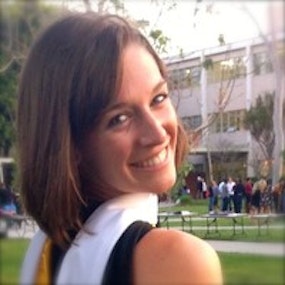
Elyse Hallett
Guest Host / Field Correspondent
As a recent Master's graduate student in Human Factors, I am passionate about improving the quality of life for people by targeting the areas they themselves deem most important. This can be through the domain of healthcare, by helping the professionals who help patients through effective interventions that ultimately enhance the efficiency of procedures and reduce the stress within the operating room. This can be through the domain of accessibility, by improving the usability of tools that end users ultimately rely on to perform certain activities on the computer. This can be through training, by running simulations of certain complex systems (e.g. the National Airspace System). Whatever the domain, the goal is still the same: To be an advocate for the end user by shifting the spotlight away from technology and focusing once more on who will actually be using it.
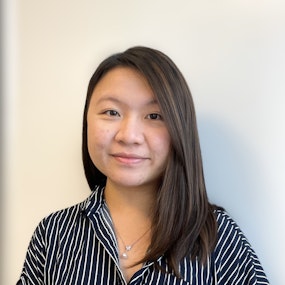
Michelle Lai
Engineering Undergrad
Michelle Lai is an Industrial Engineering undergraduate at the University of Toronto with a strong passion for user experience, interface design and software development. In 2022, Michelle was named one of ten Adobe Design Circle Scholars internationally.
Within the Safety, Equity & Design Lab at UofT, Michelle conducted research on the applications of extended reality (XR) in improving informed consent. Her work was presented at the International Symposium on Human Factors and Ergonomics in Health Care hosted by Human Factors and Engineering Society.
In Michelle's free time, you can find her painting, hiking, reading, or volunteering for children's causes! She can be reached via LinkedIn or email, and she is always down to chat about anything at all.
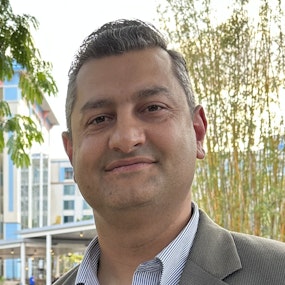
Sasoon Arutyunyan
Director
As a Human Factors & Usability specialist with 15+ years of medical device and combination product experience, I have led and managed teams of cross-functional experts for complex hardware and software projects. I have extensive technical knowledge in performing qualitative research, developing heuristic, context, function, use risk, and task analyses, and executing usability evaluations. I have collaborated with multiple interdisciplinary teams to design and develop medical devices for invasive drug delivery and non-invasive on-body sensors for various medical conditions such as diabetes (insulin pumps, pens, apps), arthritis (auto-injectors & apps), and COPD, respiratory (ventilators), and stroke (ultrasound AI robotics). I’m currently the Director of Human Factors and Research @ Mindflow Design, an MPE company.
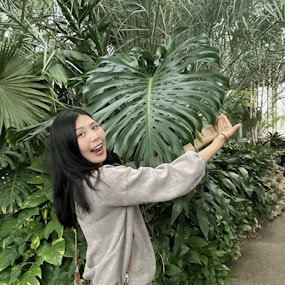
Yi-Lin Chen
UX Designer
I am Yi-Lin, from Taiwan. Currently studying in Human Factors and Ergonomics Master's program at San Jose State University. I was fascinated by the idea of universal design which provides the maximum usability to all people and that was the initial reason guiding me into the Human Factors world.
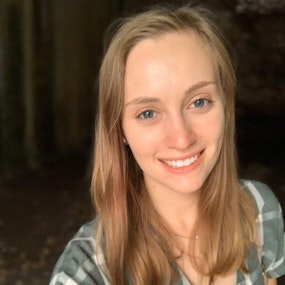
Stephanie Six
Ph.D Student
Stephanie is a 3rd year Ph.D. doctoral candidate at Clemson University researching the effect of mental health on technology, specifically how usability and product design can improve user experience in depressive populations.
New to Human Factors Cast?
If you're new to the podcast, check our some of our favorite episodes here!








































